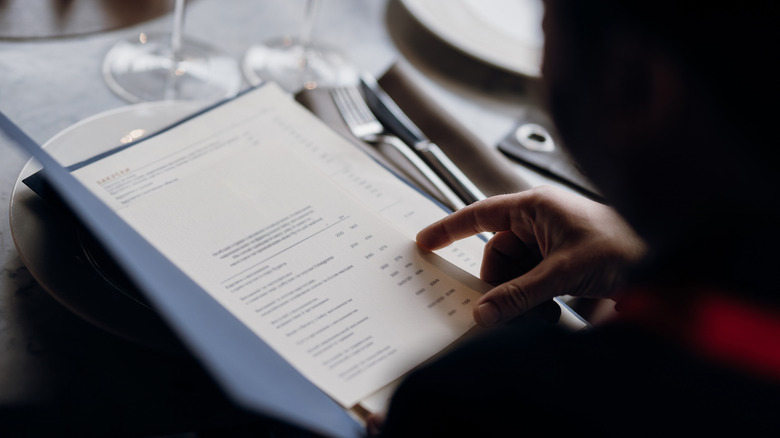How Restaurant Menus Are Evolving
As COVID-19-enforced restrictions lessen and customers return to restaurants, the hospitality industry can once again focus on in-person dining experiences. QR-coded menus are being replaced by paper, and restaurants are bringing back all the stops to woo guests – some starting with menu design.
A menu is much more than a list of dishes, 99 Designs recognizes; it is a tool that impacts a restaurant's identity. From choosing colors to using currency symbols, a strategically-designed menu can be the difference between a restaurant's success or death (via Restaurant Engine). Designing menus has become something of a science, an analysis referred to as menu engineering, as restaurants seek to make informed, evidence-based decisions that apply not only to placards, but online food listings, drink specials, and chalkboard stands (per Menu Cover Depot). Restaurants have around 100 seconds to make an impression, informs Canva. And while there is disagreement of what exactly should be listed on menus, research published in the Journal of Hospitality & Tourism Research has noted the need for transparency.
Customer-driven design
As told to ABC News, Menu Engineer Greg Rapp asserts that thoughtfully-described dishes can motivate diners to place orders. In one field experiment by The Association for Consumer Research, dishes listed descriptively not only increased sales by nearly 30% but also positively impacted customers' attitudes towards their meal, the restaurant, and future plans to return. Maximizing sales and keeping customers happy requires finesse, notes Cuboh, and some restaurants have turned to regularly updating their menus to accommodate customer preferences and supply issues.
Posist cites the pandemic for consumers' desire to make more health-conscious decisions, and restaurants have responded by offering more plant-forward dishes and ingredient substitutions. "People built a deeper relationship with food during the pandemic," Lisboeta's chef Nuno Mendes told Eater. "They no longer want to be so passive when facing a menu." Simultaneously, rising expenses have impacted many businesses' bottom line, reports CNBC, and leaner menus can result in higher profits. Editors of Flavor & The Menu warn of the "democratization of innovation," as customers' social media behavior can dramatically influence business operations (via Modern Restaurant Management). While restaurants continue to look to develop profitable endeavors, diners must remain front and center of the design experience.

